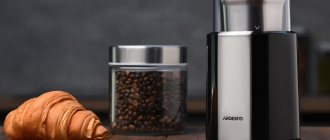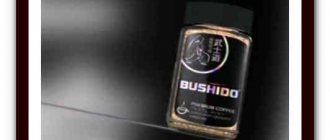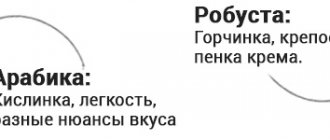The taste of the finished coffee depends on many factors - water, degree and duration of heating, type of beans, and also grinding. Under the same conditions, when preparing in the same coffee maker, it is the size of the particles that can almost radically affect the taste and aroma characteristics - making the drink bitter or sour, burnt and strong, or watery and inexpressive. We tell you which coffee grind is best for Turkish coffee, coffee machines, geyser and carob coffee makers, French press, pour over and other preparation methods.
Why Grinding Affects Taste
The grain should extract aromas and flavors into the water within a short time - about 3 minutes. In this case, the liquid should not be very hot - no more than 92 degrees. The larger the particles, the longer it takes the boiling water to penetrate inside and wash away all substances.
If the beans are ground into dust, extraction occurs instantly, and the drink becomes thick and rich - what true connoisseurs of coffee taste need.
Arabica or Robusta - differences in taste in Turk
There are two industrial varieties of grain - Arabica and Robusta. They differ from each other in the shape of the beans, taste, and caffeine content. If Arabica in each region changes its taste characteristics depending on the type of soil, climate, and changes shades from citrus to spicy, then Robusta is less susceptible to environmental conditions.
If you brew Arabica, Robusta separately, and then a mixture of these beans in a certain proportion, you will get the following result:
- Pure Arabica has a mild taste. Depending on the variety and region of cultivation, it will have certain notes - chocolate, fruit, wine, tart. There is less caffeine in Arabica, so the rush of vivacity is felt weakly, but you can appreciate the shades of the aftertaste.
- Robusta gives bitterness. The aftertaste is slightly different, but due to the high caffeine content, a sharp surge of energy occurs and the person wakes up.
- A blend of Robusta and Arabica in a 30/70 ratio provides the optimal combination of taste and invigorating effect.
When brewing, the best ground coffee for Turkish coffee is a mixture of bean varieties; which one is better to choose in the taste rating is difficult to say right away, since coffee trees are grown in every region of the tropical belt.
To be an expert in coffee drinks, you need to try many varieties - highland, lowland. Preferably brought from abroad, and not purchased in local stores.
How to choose a grain variety
How to choose ground coffee beans for Turkish: the rating is opened by expensive elite high-mountain varieties. There are few such plantations in the world - not every country can boast of mountain ranges of volcanic origin.
This is where the most delicious coffee is grown. Volcanic soil is rich in nutrients erupted from the depths of the earth. Trees on such soil grow on their own - without additional fertilizing and spraying against fungus and parasites.
The bean coffee for Turkish coffee with a lower rating can be called lowland Arabica. Its grains are not as dense and heavy as mountain grains, but they have their own advantages.
Next comes Indian Arabica. In India, weather conditions change frequently and it rains, so the harvest is inconsistent in taste. For this reason, grains are mostly used to make instant drinks.
Robusta also comes in different varieties - some are more bitter, others are less bitter. For example, robusta from Uganda or Vietnam has a mild taste. If you boil it in a Turkish pot, you get a good strong drink with a bitter aftertaste.
Coffee in packs
Which ground Turkish coffee to choose if there are no specialized stores nearby: personal experience decides everything here. Counterfeits often end up in retail outlets, so your opinion about the product may change. After trying crushed ready-to-brew analogues, you can choose the best ground coffee for Turkish coffee in the ratings of local stores.
Which coffee to choose: beans, powder or capsules
- Grain products are considered the best for Turks. Ground beans immediately before use will impart aroma and taste to the drink. Only in this case the drink will be as tasty and rich as possible.
- Grinding coffee beans is necessary so that the drink can be brewed. This process is necessary for all cooking methods: in a Turk, coffee maker, coffee machine. When purchasing ready-made ground powder, we open the vacuum packaging, after which the contents release their aroma and quickly absorb foreign odors. Therefore, it is important to properly store the contents of the opened package.
- A capsule product is ground coffee packed in a disposable vacuum capsule. The drink from the capsule is aromatic and rich.
What kind of coffee should be brewed in a Turkish coffee pot? It is advisable to first grind a portion of the grains, and then brew a drink from the resulting powder in a Turk.
How taste depends on the region of growth
As already mentioned, you can choose bean coffee for Turkish by region:
- African varieties;
- South American;
- Central American;
- Asian.
The choice will depend on what is on sale. If you order from online stores, it is recommended to buy several different varieties of 100 g . Be sure to request a vacuum bag for each variety.
To make fewer mistakes when choosing ground coffee for Turkish coffee, you need to decide on the taste - bitter, sour, spicy, fruity. Roasting also matters. If you take medium or light roast beans, the aftertaste will be better felt.
Instructions for grinding beans
First you need to decide on the degree of grinding. Prepare a drink from the resulting powder immediately; there is no need to store it. For 1 cup of coffee, it is enough to pour 2 tablespoons of grain. Gourmets know how to get a more perfect drink - the beans should be slightly warmed in a dry frying pan before grinding.
If there is any powder left after grinding and brewing the drink, it must be sealed and stored in the refrigerator.
In a manual coffee grinder
A manual coffee grinder requires more time and effort, but the beans do not overheat, and the drink turns out more aromatic and tasty.
The manual device consists of 2 millstones. One of them is at the bottom of the device, the second rotates using a handle. A measured amount of beans is poured into the container, and the handle is turned for about 15–20 seconds. The resulting powder is immediately used to brew the drink.
Important! You should not use the coffee grinder for other products, otherwise the coffee will absorb foreign odors.
In an electric coffee grinder
The beans are ground faster in an electric coffee grinder. Among them are:
Knife or rotary – electric models, with the help of which coarse and medium grinding are obtained. Built-in knives grind grains for as long as possible until the user turns off the device.
The container volume is designed for a drink for 3–4 people. Instructions:
- open the lid;
- pour the grains into a container with knives at the top;
- turn on the device;
- mark the time;
- wait, turn off the device;
- open the lid and take out the finished powder.
But the intensity of grinding in this case cannot be controlled. Then you can sift the grind through a sieve and pass large pieces through the device again.
Millstones – suitable for obtaining high-quality fine grinding. The beans are ground in special bins. The distance between the rotating millstones can be adjusted, and the type of grinding depends on this.
It's easy to grind coffee in a burr grinder:
- adjust the distance between the mechanisms and set the desired degree of grinding;
- pour the grains into a special container;
- turn on the device;
- wait and pour out the finished powder.
Millstone devices are the most preferred option for drink lovers; they have a wide grinding range.
Grinding for other devices
If it is decided that the Turk requires the finest grinding, then this technique is contraindicated for other devices for brewing coffee.
French press
A French press is a transparent flask with a piston for separating grounds from the finished drink. To prevent the filter from becoming clogged and the coffee not to become bitter after long infusion, the grinding is done coarsely. 10 minutes after pouring boiling water, you get a delicious, rich drink.
Carob coffee maker
The carob coffee maker does not accept dust, as you need to grind Turkish coffee. Because of this, water stagnates in the horn filled with tea leaves. If the coffee maker is not equipped with a pump, you will not be able to get a shot of espresso. The grind for electric coffee makers should be medium.
Drip or geyser device
For a drip filter coffee maker, it is better to grind coffee coarser than the average particle size. The principle here is the same as in the horn. If you fill too small fractions with water, it will be absorbed and will not pass further. Large particles allow liquid to pass freely, but the drink turns out watery – not for everyone.
For a geyser coffee maker, you can use medium grinding. Using steam, a slight pressure is created, which pushes the liquid out. A strainer that is too fine will clog the strainer.
Purover
Pour over is the predecessor of a drip coffee maker and an analogue of the Vietnamese fin. In it, liquid passes through a layer of grains under the influence of gravity. Therefore, the grind should not be fine, otherwise the water will get stuck.
Video: Grinding Turkish coffee beans
Large particles are slightly compacted, then boiling water is poured in - not all at once, add little by little. Extraction occurs gradually as hot water enters.
The right Turk - what is she like?
There are several factors that can tell you for sure that you are holding in your hands a traditional, correct Turk, in which you can brew real Turkish coffee.
Form
The first and, I must say, very important step in choosing a cezve. The shape of a regular coffee pot is jug-shaped.
: with a narrow neck and a wide bottom. Thanks to the narrow neck, the rising foam of boiling coffee seems to clog it, which provides a bright and rich taste and aroma of coffee.
The bottom of the cezve should be thick and at least 2 times wider than the neck. This will ensure even heating and extraction of the coffee. By the way, the wider the bottom, the flatter the walls of the dish will be, which is also important for the richness of the drink.
Volume
We are often asked what the volume of a Turkish pot should be so that it produces good coffee and the utensils are practical. We will have to upset those who plan to find a liter cezve and brew a coffee drink in it for the whole large family at one time. After all, in Turkey, coffee is traditionally prepared in small portions: 50-80 ml. Therefore, the original cezve should not be more than 100 ml in volume. In this case, each cup of the drink must be brewed separately. However, on the modern market you can find “Europeanized” models of 150, 200 or 300 ml - these are the portions that many people drink coffee in these days.
Material
On sale you can find cezves made from a wide variety of materials:
- Copper;
- Aluminum;
- Silver;
- Glass;
- Ceramic and clay;
- Brass;
- Made from stainless steel.
But real, traditional Turks are made of copper.
Copper cezves are recognized as the best for making oriental coffee. They are beautiful and practical. The thermal conductivity of copper is one of the best among other metals used in everyday life, and is second only to silver. It is 10 times higher than steel and 2 times higher than aluminum. Thanks to this property, heat is better distributed throughout the entire body of the cezve, thereby ensuring uniform heating of the liquid. The low heat capacity of copper allows you to control and manage the coffee preparation process. When the cezve is removed from the heat source, the heating process stops instantly. Turks made from other materials (ceramics, glass, earthenware, stainless steel, etc.) do not have such properties.
Let's figure out what the pros and cons of a copper Turk have.
Such a cezve has enough advantages to consider it the most suitable:
- Uniform heating;
- High thermal conductivity;
- Durability;
- Aesthetic appearance.
How does all this affect the quality of the finished coffee, you ask? When the bottom of a copper pot is heated, the temperature quickly spreads across the entire area of the pot and evenly heats the coffee powder, giving a rich drink even before boiling. After all, when boiling, coffee oils lose their taste and strength.
The disadvantages of copper Turks include:
- High price;
- Toxicity of copper salts. But this problem is solved quite simply by modern manufacturers: the inside of copper utensils is coated with tin - a malleable and fusible shiny silver-white metal, non-toxic and resistant to oxidation. That's why a copper Turk is white inside.
Copper cezves can be stamped or forged. The first is a budget option due to thinner copper. But precisely because of this, extraction occurs faster in stamped Turks, which can negatively affect the taste of coffee. Forged models are made of thick copper, due to this, and also because of the amazing taste of the coffee that is obtained in them, they are more expensive.
When deciding for yourself which material is better, just study the advantages and disadvantages of each. For example, when choosing which cezve is better, copper or stainless steel, remember that steel models, as a rule, do not have a narrow enough neck. They are more like ladles and there is no point in talking about the correct extraction in them. In addition, their thermal conductivity is quite low, which, as we already know, leads to uneven heat distribution.
When choosing a copper or ceramic pot, pay attention to the fragility of the latter. But, when deciding which Turk is better: copper or brass, do not forget that brass is an alloy of copper and zinc. Therefore, the properties of a brass cezve will be similar. But it is the alloy that makes production cheaper, so the price of a brass Turk will be an order of magnitude lower.











